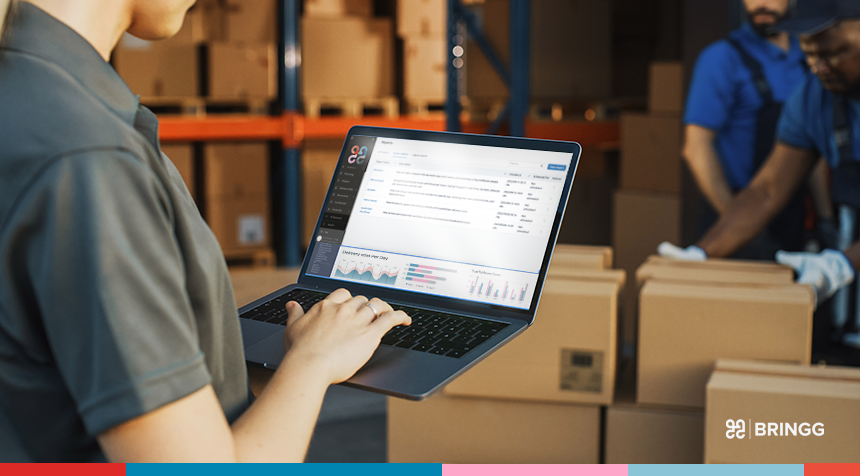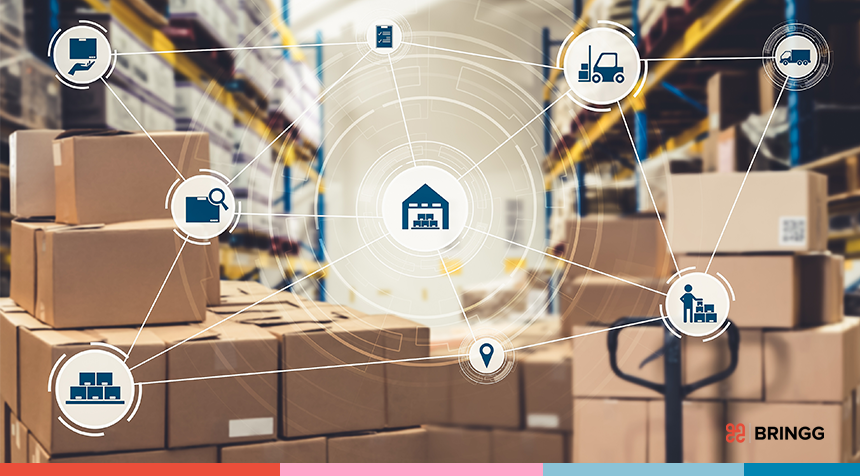Automating your delivery operations is critical if you want to maintain profitability while matching the current expectations for customer experience.
Recently, we wrote about the ways in which rising customer demands are redefining last mile delivery across multiple industries. Shoppers today are demanding an unprecedented level of control over when, where, and how they purchase and receive goods and services.
But delivering efficient last-mile delivery services that are as convenient, flexible, and fast as your consumers are expecting is quite a challenge.
That’s where machine learning and delivery automation come in.
New technologies are enabling more efficient, automated operations across the last mile, from the moment the order is placed to the moment it reaches the customer.
Warehouse automation: efficiently moving from order to delivery
Automating warehouses and customer fulfillment centers is one of the simplest ways to reduce costs and increase the speed of order handling.
One example is Ocado, the UK grocer which built automated customer fulfillment centers where everything is operated using an automated order fulfillment platform. Item placement, for example, is decided by algorithms, and robots perform much of the lifting and moving. However, human pickers still perform the final step of filling up an individual order.
Using automated tools to plan warehouse logistics and optimize product location within the fulfillment center can cut time in half for the human pickers. When fresh goods like groceries are involved, it can also prevent goods from going bad before they’re delivered.
Automated Dispatch and Route Optimization
Artificial Intelligence (AI) is all the rage these days. Only a few years ago, when the hype around autonomous vehicles was at an all-time high, McKinsey predicted that 85% of last-mile deliveries would be made through autonomous means – driverless cars, robots, or drones.
Fast-forward to a fatal car-crash involving a driverless Uber car produced by Tesla, and subsequent dives in Tesla’s stock.
While driverless cars, drones, and other autonomous vehicles have tremendous future potential to speed up deliveries and reduce delivery costs for companies, in the short term companies should look for AI delivery tools that aim to support drivers – not replace them.
Companies should look for AI delivery tools that aim to support drivers – not replace them.
Dynamic routing apps that suggest optimized routes for dispatchers, or software that shows the progress of drivers from multiple fleets on a single dashboard, can free up a dispatcher’s resources and provide concrete benefits to businesses from the first day of deployment.
Similarly, services that give customers and dispatchers real-time visibility into where a package is at any given moment will massively improve the customer experience, and make deliveries more cost effective by reducing delivery bottlenecks.
Driver communication, progress, and oversight
Even the best drivers can use a bit of help. Automating the delivery progress to include driver monitoring helps dispatchers spot problems or delays even before they talk with a driver.
Related: Top 3 Driver Incentives That Improve Fleet Performance
Monitoring driver progress is particularly useful for companies that utilize third party fleets, especially if they have no visibility into the driver’s working hours. A delivery automation system that plans routes also estimates the delivery time per order, so it’s easy to spot when a driver is loitering or delayed due to external factors.
Taking it a step further, a good delivery logistics ecosystem will integrate with online payment methods to manage driver payment more efficiently and accurately. In the restaurant and food delivery industries, drivers commonly perform other functions outside of the delivery rush hours, functions which often have different pay scales. A system that monitors when a driver is working can also track their entire work log, and keep track of the data to simplify salary calculation.
Let’s not forget the drivers themselves, who are the principal beneficiaries of more efficient channels of communication with dispatcher and the customers. With automated delivery communications tools, drivers can easily inform customers when the delivery is running late, and give customers additional delivery options – an alternative pick up location, or drop off time – that helps them maintain the delivery schedule without letting the customer down.
Digitize Communication with Customers
As with any business model, the best way to increase profits from online delivery is to ensure the best customer experience.
Using automation tools to orchestrate delivery operations presents new ways of engaging with your customers and providing the delivery experience they now expect, whether in delivery speed or in convenient delivery options.
Here are a few examples:
- Automating orders – Store a customer’s order history and preference, and personalize the language.
- Automated, real-time delivery alerts – Customers want to be in control of the delivery process. Send them updates when a package is shipped to a warehouse or fulfillment center, when it leaves the center, when it’s reached a local pick-up location or when the arrival time estimation changes.
- Follow up with customer reviews – Create a delivery app or utilize an existing one to follow up your great delivery service with a customer review.
Take, for example, a customer named ‘Michael’ who ordered online. He received timely mobile alerts about his purchase’s delivery progress. He pre-selected a convenient delivery time. He received mobile updates about his delivery’s progress, and received it at the expected time. Michael, in short, is one happy customer. And if the delivery messages are part of his delightful customer experience, he’s more likely to respond to a follow-up message asking about his customer experience, than to an email or phone survey. Chances are, the feedback will be positive – and if not, it’s valuable information that will help you improve the delivery experience for him in the future.
All of these automation use cases create a more efficient on-demand delivery process that enhances the customer experience, while reducing the ever-present costs associated with the last mile of delivery. And while automating delivery operations can come with its own set of challenges, being able to more easily and affordably control, monitor, and scale delivery is an opportunity that brands and delivery providers cannot ignore.



